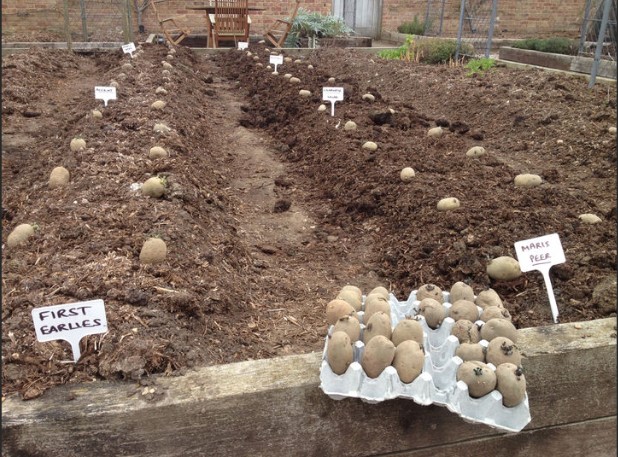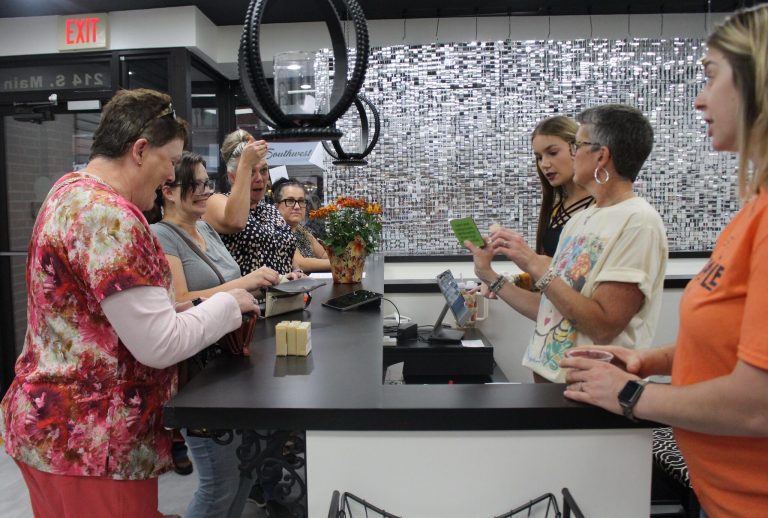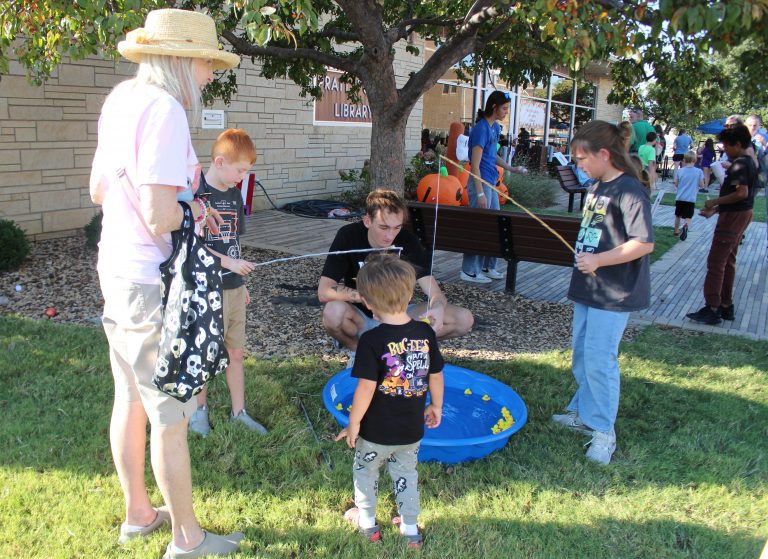By Chris Himmelwright
Pratt County Master Gardener
Pratt County Research and Extension Services
Time to Plant Potatoes!
Actually any time from mid- to late-March is fine for potato planting. Be sure to buy seed potatoes rather than using those bought for cooking. Seed potatoes are certified disease free and have plenty of starch to sprout as quickly as soil temperatures allow. Most seed potatoes can be cut into four pieces, though large potatoes may yield more, and small less. Each seed piece should be between 1.5 and 2 ounces. Seed pieces this size will have more than one eye.
Each pound of potatoes should yield 8 to10 seed pieces. Cut the seed 2 to 3 days before planting so freshly cut surfaces have a chance to suberize, or toughen, and form a protective coating. Storing seed in a warm location during suberization will speed the process. Plant each seed piece about 1 to 2 inches deep and 8 to 12 inches apart in rows. Though it is important to plant potatoes in March, emergence is slow. It is often mid- to late-April before new plants poke their way through the soil.
As the potatoes grow, pull soil up to the base of the plants. New potatoes are borne above the planted seed piece, and it is important to keep sunlight from hitting the new potatoes. Exposed potatoes will turn green and produce a poisonous substance called solanine. Keeping the potatoes covered will prevent this.
Rhubarb
Rhubarb is a perennial vegetable that can be a bit tricky to grow in Kansas. It is native to northern Asia (possibly Siberia) and so is adapted to cold winters and dry summers. However, it is susceptible to crown rot and should not be subjected to “wet feet” and therefore should be grown in a well-drained soil. The addition of organic matter can increase drainage as well as raise the soil level so that crown rot is less likely. Also, have a soil test done as rhubarb does best with a pH below 7.0.
Rhubarb should be planted from mid-March to early April in Kansas. Mix 5 to 10 pounds of well-rotted barnyard manure into the soil for each 10 square feet of bed before planting. Rhubarb is propagated from crowns (root sections) that contain one or two buds. Plants should be spaced 2 to 3 feet apart in the row with 4 to 5 feet between rows. The crowns are planted shallow so that the buds are just one-half to 1 inch below the soil surface.
Firm soil around the crowns and make sure they are not in a depression that holds water. Recommended varieties include Canada Red, Crimson Red, McDonald and Valentine. Rhubarb needs rejuvenated at least every 5 to 10 years and should be dug and divided from mid-March to early April. Use a cleaver or axe to cut crowns into sections that each contain one or two buds. Plant as described above.
Newly transplanted rhubarb should not be harvested the first year so the plant can recover from the transplant process. Only a few stalks should be harvested the second year to allow the plant to continue to build up its energy reserves.
The harvest season for plants that are three years or older usually lasts about 8 weeks. Harvest only the largest and best stalks by pulling them slightly to the side so that they break away from the plant. Never harvest over one-third of the leaf stalks at one time. Only the leaf stalk (petiole) is eaten as the leaf blade contains oxalic acid and is poisonous. Mulches can be used to reduce moisture loss, prevent weed growth and provide winter protection. However, it should be pulled away in the spring to allow the soi to warm so that early growth is encouraged.
Remove Fern and Fertilize Asparagus
If you haven’t removed last year’s growth from asparagus plants, now is the time. Asparagus comes up around the first of April in Manhattan but will be earlier in southern Kansas and a bit later further north. Also, asparagus benefits from a fertilizer application early spring. Fertilize according to a soil test or add 1 to 2 pounds of a 10-20-10 fertilizer per 20 feet of row before growth starts. If a soil test shows that only nitrogen is needed, apply 1 pound of a 16-0-0 product or ½ pound of a 30-4-5, 27-3-3 or similar fertilizer per 20 feet of row. Incorporate lightly with a tiller or rake in fertilizer before spears emerge. Fertilize again at the same rate after the last harvest.
Adapted from the Kansas State Horticulture Newsletter




